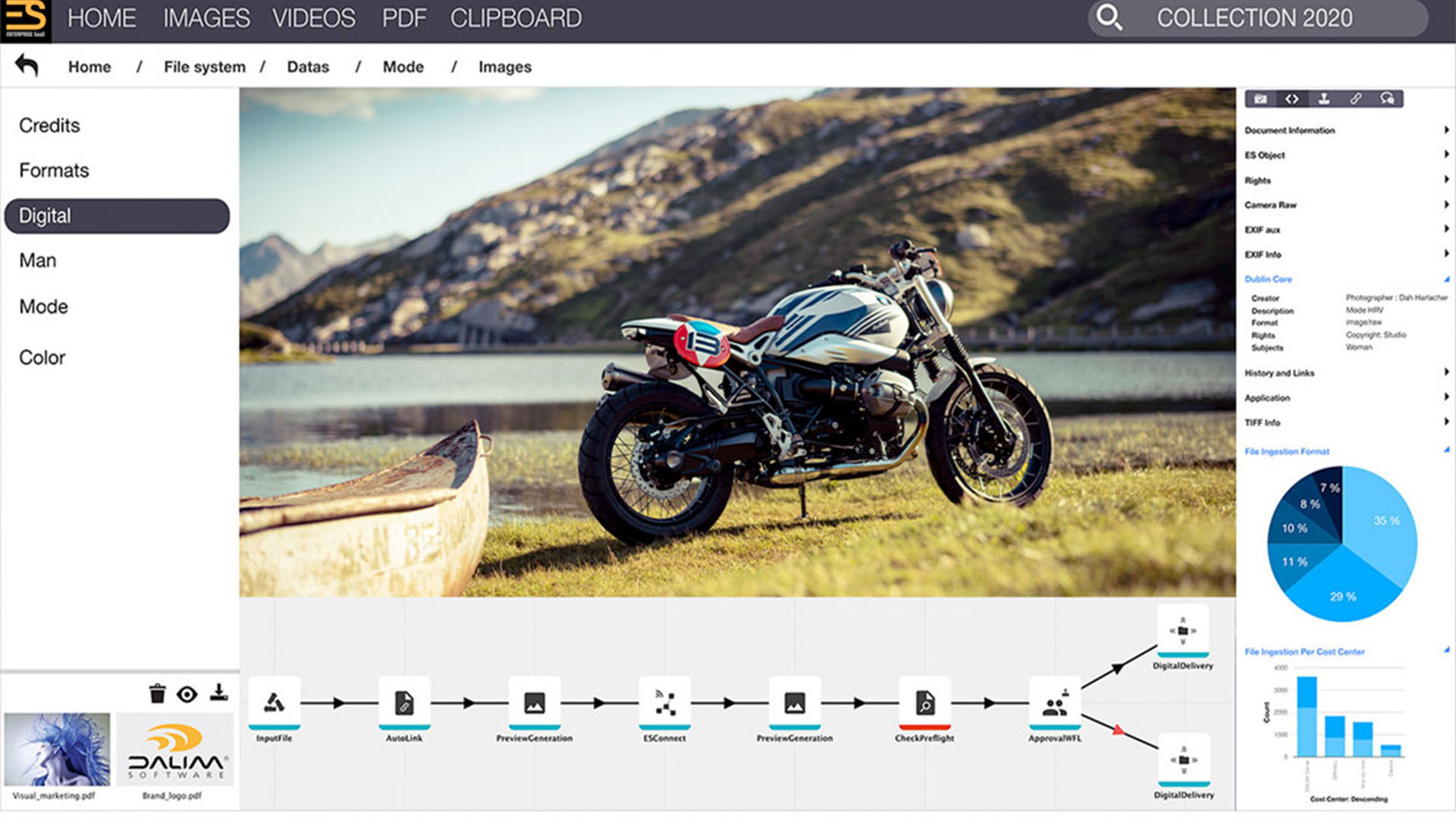
The Top 10 Characteristics of a Functional DAM
Claims that Digital Asset Management or DAM will increase four times in the coming years quickly became the talk of the town, and everybody wants to take part in it. Digital Asset Management sellers are often at fault for being in the catch-all classification. Because of this, Digital Asset Management professionals have noted market fragmentations.
The Digital Asset Management Foundation, or DAMF, announced the Ten Characteristics of DAM, which is also called 10 Core, to build and set a standard and counter the issue. Unfortunately, since releasing these 10 characteristics the DAMF has closed its doors although their list of ten characteristics is still completely applicable.
Digital Asset Management systems can still be tested to check and ensure that the 10 Core gets met.
10 Core Characteristics: Setting the Bar DAM High!
The Digital Asset Management Foundation lists the Ten Core Characteristics of Digital Asset Management. As ratified by the DAM Foundation Board of 2014, the 10 Core are as follows:
Ingest
Assets are bolted up individually or in mass sets through the use of metadata actions. Digital Asset Management uploads, writing metadata, and reading metadata with batch and bulk actions also get included.
Secure
Defining roles to control access for users, security, and managing asset control lists for content are all under the second characteristic. Through the notifications, expiration dates, and embedded metadata, you could easily manage every right.
Store
Systems can also store assets like binaries and metadata in Digital Asset Management. These systems could also store various file types in a DAM system, making the customization of metadata fields possible. Additionally, you can also attach metadata to files.
Transform
Digital Asset Management also allows the rendering or the modification of assets to reincarnate into new forms like substitute files or thumbnails. You could also modify these assets too. During download, changes like cropping get requested.
Relate
The relationships between original assets and the variants or the other versions made. This characteristic is a key and significant feature in the asset’s life.
Enrich
Metrics are also made and produced in the Digital Asset Management systems through the use and reuse of assets. You could also export graphs and reports to be able to see the cycle.
Process
The Digital Asset Management systems regulate a process structured well enough to create, manage, and review assets with workflow tools. With the use of review or import and approval of workflows, businesses can streamline this process.
Find
Finding and retrieving assets are also made possible through the DAM systems by facilitating searches using metadata, workflows, collections, and access control tools. Advanced queries, lightboxes, and taxonomy are some of the various solutions available in finding assets.
Preview
The DAM systems could preview various kinds and types of files before downloading or opening the file itself. The assets could also be classified and grouped for them to be shared externally or internally.
Produce and publish
The DAM system also makes the production and publishing of the content through asset distribution outside of the system. This process can get done through linking, sharing, and many more. This function can be as basic as making a URL or as tricky as creating collections to share with a group.
DAM Passers: The DAM Check
Checking DAM systems has never been this easy. With the use of these 10 essential characteristics, one can quickly check the legitimacy of any DAM. After ensuring a DAM system, the next step would be providing the right people and processing the information necessary for the quadfecta as stated in the DAM Maturity Model. Though these four parts come with the DAM system’s success, they should not get neglected or forgotten as conflicts may arise.
How do You Choose the Best DAM Solution?
A one size fits all DAM solution does not exist. However, that is good because it implores all DAM solutions to get calibrated to fit your business’s specific needs. To get the best system, the DAM should denote a few principles.
Flexibility
One’s Digital Asset Management system should find and retrieve assets, or else the system doesn’t have value. The DAM system should support flexible metadata schemes to modify labels and fields suitable to one’s needs.
Collaboration
The DAM system should be as collaborative as the work environment. A system that offers different tools is greatly needed for the work to be done to achieve this. For instance, DAM is used instead of an email as it is more efficient and allows a well-organized discussion of a specific asset, including its creation and modification.
System Adaptability
System adaptability allows for higher productivity, a less organized work environment, and lower stress for the users.
Reporting & Analytics
An excellent DAM system should have the ability to deliver a massive range of custom reports. The system should also answer questions vital questions:
- Who is uploading new assets?
- Where are these assets published?
- Who accesses the assets?
- How are assets being used?
- Which assets are currently in production?
Distribution
An excellent DAM system allows one to see the reflections of digital assets created for distribution. This distribution system permits a quick and easy distribution of files to different platforms like social media, email, and desktop computers.
Conclusion
Digital Asset Management could be challenging, but with the proper knowledge and guide, and with the right characteristics, standards, and a few principles, choosing the best DAM system is more manageable and possible.



